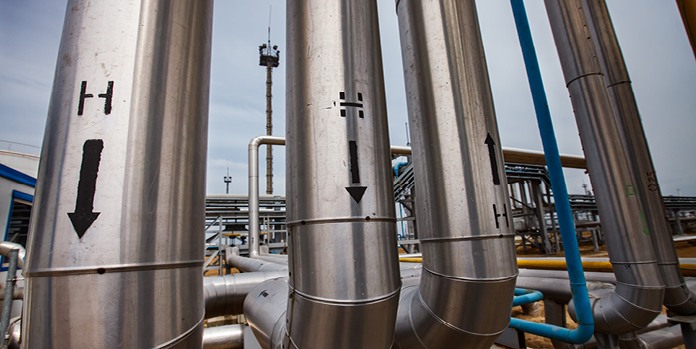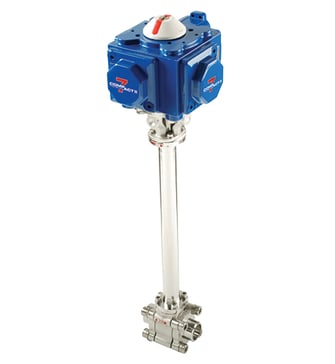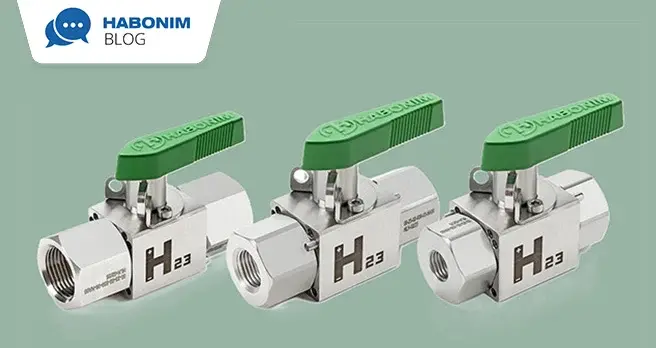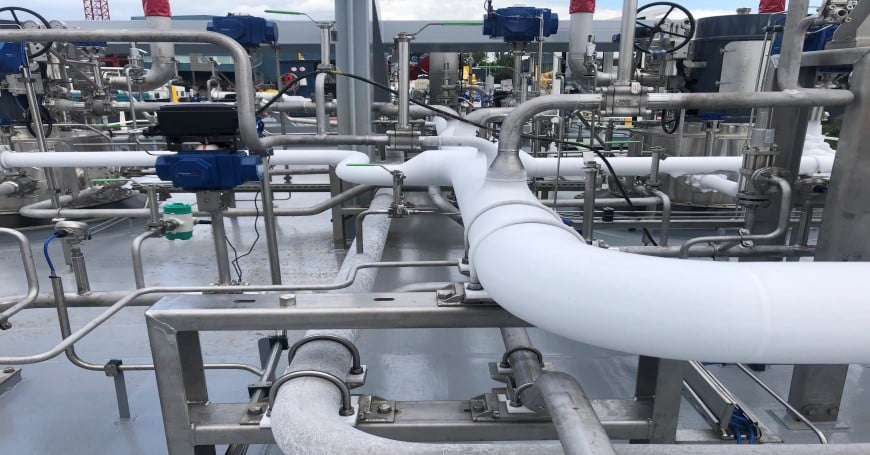For over a century, transportation fuels have been almost exclusively based on hydrocarbons for oil. More recently, hydrogen has emerged as a potential long-term replacement for hydrocarbon fuel and is expected to play an important role in a future energy economy based on environmentally clean sources and carriers.
What makes liquid hydrogen a potentially perfect environmental fuel?
Hydrogen is lightweight, contains a high energy density (3.4 times more energy than gasoline on a weight basis), and its combustion does not emit harmful by-products. That said, while hydrogen is potentially the perfect environmental fuel and is one of the most abundant elements on earth, it is also almost impossible to find in its purest form.
This means that it has to be extracted from the molecules in which it is found, for example, water and organic compounds. Several methods and technologies can be used to do this, including electrolysis of water to split the hydrogen from the oxygen, natural gas reforming (gasification), renewable liquid reforming using renewable liquid fuels such as ethanol, and renewable energy sources such as solar, wind, biomass, or geothermal technologies. These methods will need to be optimized in order to advance hydrogen and fuel technologies.
Efficient and safe storage methods are key to promoting a “hydrogen economy”
In addition, the efficient and safe storage of hydrogen poses multiple challenges that will need to be resolved to further promote a “hydrogen economy”. While hydrogen has the highest energy mass of any fuel, it also occupies a substantial volume under standard conditions of pressure (atmospheric pressure).
For this reason, in order to store and transport hydrogen efficiently, its volume needs to be
significantly reduced. This can be done in three ways. The first is as high-pressure compressed hydrogen in high-pressure tanks; the second is as a solid by either reacting or absorbing with chemical compounds or metals or storing in a different chemical form; and the third is as a liquid in cryogenic tanks (at temperatures below -253 °C).
Liquid hydrogen – the ideal way to store more hydrogen in a given volume
Of these three methods, the ideal way to store more hydrogen (energy) in a given volume is to convert it into liquid hydrogen (LH2) as liquid hydrogen has a higher energy density and poses fewer potential storage pressure risks than compressed hydrogen. While liquid hydrogen is still mainly used in the space and aeronautics industries as a primary rocket fuel for combustion with oxygen and fluorin
e, it is now also gaining popularity in other areas such as the storage and transportation of hydrogen for transportation fuel.
In this storage method, hydrogen gas is compressed at high pressure and then liquefied at cryogenic temperatures (-253 °C) in a liquid hydrogen tank. In order to store and transport liquid hydrogen effectively and safely, all storage vessels, piping and equipment need to be designed to su
pport the varying pressure and extremely low temperatures involved. This also includes the valves used in these systems as they are a critical component in the flow control of the hydrogen liquid, can be a potential source of release or leakage, and are essential to shutting down systems in case of em
ergency.
In addition, while liquid hydrogen stored in tanks is relatively safe, potential hazards and
safety issues arise during handling and if the hydrogen escapes into the atmosphere. Due to the fact that hydrogen migrates quickly though small openings, ignites easily and burns with an almost invisible flame, potential hazards include fire, hydrogen burn
s, explosion, asphyxiation, and exposure to extremely low temperatures. For this reason, all equipment used in liquid hydrogen applications should fully comply with the relevant regulations, codes and standards.
<< Consult our experts about your application >>

Habonim actively supports the transition to alternative, cleaner energy sources
Habonim actively supports the transition to cleaner energy and has more than 25 years of experience in designing, manufacturing and supplying advanced valve solutions for high-pressure environments and the handling of low-temperature liquefied gases under extreme operating conditions for the gas, cryogenic, and space industries. This enables Habonim to offer proven valves for high-pressure, cryogenic, flammable and potentially explosive natural gas applications – including liquid hydrogen systems.
As such, Habonim is involved in several projects with leading companies that are developing first-of-a-kind systems to be fueled with liquid hydrogen. Together with these companies, Habonim is also currently working to solve the challenge of testing valves and systems at the cryogenic temperature of liquid hydrogen as it is lower than what the market is currently equipped for.
The valves designed for use in these innovative system need to be able to withstand the extremely low temperatures characteristic of the processing, storage, shipment, and distribution of liquid phase hydrogen. Habonim takes this and the fact that valves are constructed from different materials with varying contraction rations into careful consideration when designing its valves for such deep cryogenic conditions. This ensures their optimal functionality, full sealing, and constant valve torques over a wide range of changing temperatures.
Habonim also has a deep understanding of the unique properties and safety concerns inherent to liquid hydrogen, and offers a legacy hydrogen specific feature with all of its standard, cryogenic and high-pressure valves to minimize risks and prevent potential hydrogen leakage.
Habonim also recently announced the H29 high-pressure hydrogen ball valve, which is optimized for durability and safety in high-cycle hydrogen fueling, storage, and manufacturing systems and tested according to the latest ISO 19880-3:2018 Gaseous hydrogen – Fueling stations – Valves standard.
Ensuring integrity and safety in harsh applications
In order to prevent potential safety hazards related to the handling and storage of harsh media such as liquid hydrogen, all of our valves are equipped with the Total HermetiX integrity package. This includes our patented HermetiX™ steam sealing with zero fugitive emission sealing capability, a double-body sealing for body-to-ends and for body-to-bonnet superior atmospheric sealing, and superior inline sealing.
In addition, we are able to integrate specific safety features for high-pressure and cryogenic applications such as Emergency Shutdown (ESD). This enables the safe shutdown of gas flow in the case of an emergency or system failure; a double-body sealing for body-to-ends and for body-bonnet superior atmospheric sealing; and an all fire-safe design that is tested and certified according to API 607 and ISO 10497.
All of our high-pressure cryogenic valves for use with compressed and liquid natural gas forms are designed, manufactured and tested according to general quality system standards including such as API-6D (no: 6D-1278) and ISO 9001 Quality Management, and specific standards for cryogenic gas applications, high-pressure applications, the Oil & Gas segment, the marine sector, and explosive and fire-hazard environments.









